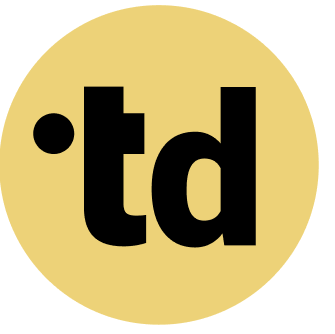Key Takeaways
Managing AI ethics requires a clear framework based on principles like transparency, fairness, and human oversight to build trust and ensure compliance.
Defining specific roles and responsibilities for both humans and AI agents is crucial for preventing confusion and enabling effective hybrid team (humans and AI agents) collaboration.
Successful AI integration moves teams from overload to flow, with measurable benefits like increased productivity and reduced change fatigue.
The adoption of artificial intelligence is accelerating, with 20 percent of German companies now using AI, an eight percent jump in just one year. Yet, this rapid integration brings significant challenges, as 58 percent of firms cite uncertainty about legal consequences as a major barrier. This gap between implementation and understanding creates change fatigue and exposes teams to ethical risks. For Team Architects, the challenge is clear: establish a framework for managing the ethics of AI in teams. This means creating clear roles, fostering transparency, and building a resilient hybrid team (humans and AI agents) where humans and AI collaborate seamlessly, a core goal of modern organizational development.
Acknowledge the Chaos of Ungoverned AI
Teams are struggling with unguided AI adoption, and the numbers show it. While 72 percent of European organizations use AI, many employees operate without a map. This creates a landscape of hidden risks, from biased decision-making to breaches of data privacy. The EU AI Act now prohibits certain practices like emotion recognition in the workplace, raising the stakes for non-compliance. For Team Architects, the first step is recognizing that ambiguity is the enemy of performance. Without clear protocols, teams can't have fun; they're too busy navigating ethical fog. This initial chaos, however, sets the stage for a heroic journey toward clarity and control.
Implement Guardrails for Human-AI Collaboration
To conquer chaos, every hero needs a code. For hybrid teams (humans and AI agents), this code is an ethical framework that governs human and AI interaction. The EU's guidelines for trustworthy AI provide a foundation built on seven key requirements, including transparency, fairness, and accountability. More than 84 percent of Europeans believe AI requires careful management, underscoring the need for clear rules. By establishing these guardrails, you create a safe space for innovation and build trust. You can learn more about creating human-AI protocols to get started.
Our Playful Tip: Use this checklist to build your team's ethical AI framework.
- Human Agency and Oversight: Ensure a human can often intervene and override AI-driven decisions.
- Technical Robustness and Safety: Implement protocols to ensure your AI systems are resilient against errors and harmful outcomes.
- Privacy and Data Governance: Adhere strictly to GDPR and define what data AI can and cannot access.
- Transparency: Document and communicate how AI models arrive at their conclusions or suggestions.
- Fairness and Non-Discrimination: Regularly audit AI tools for biases that could impact team members.
With a solid framework in place, the next step is to define the specific roles each player-both human and bot-will take on.
Define AI's Role with Precision and Purpose
Clarity begins where ambiguity ends: with well-defined *roles and responsibilities*. Integrating an AI agent is like onboarding a new team member with a unique skillset. Its role must be explicitly defined to prevent overlap and confusion. A staggering 71 percent of German companies cite a lack of knowledge as the main barrier to AI adoption, a problem solved by clear role definition. Defining the AI's tasks and authority is the single most effective step toward successful *AI agent integration*. Using a platform like teamdecoder allows you to visually map these new *team structures*.
Deep Dive: Follow these four steps to integrate an AI agent effectively.
- Identify Core Tasks: Pinpoint repetitive, data-intensive tasks that the AI can handle, freeing up humans for strategic work.
- Set Boundaries and Permissions: Clearly define the AI's scope of authority and its access to data, aligning with EU privacy standards.
- Establish Interaction Protocols: Outline how and when human team members should interact with the AI. See how to manage AI and human roles together.
- Assign Human Oversight: Designate a specific person responsible for monitoring the AI's performance and ethical alignment.
Once roles are clear, you can focus on making the AI's operations transparent to the entire team.
Foster Transparency in AI Operations
Trust is built on transparency, a principle at the heart of Germany's national AI strategy. When teams understand how an AI works, fear and resistance diminish. This is critical, as some HR professionals are concerned about data privacy and security in AI systems. Making AI processes understandable helps Many people feel more in control and less like they are being managed by a black box. Transparent operations turn suspicion into acceptance.
Our Playful Tip: Think of your AI's decision log as its work journal, open for any team member to review. This simple practice demystifies its actions and builds collective confidence. You can try teamdecoder for free to see how this works in practice. For more on this topic, explore our guide on how to govern AI agents. This open approach is the key to making bots and humans click, leading to measurable improvements in team performance.
Measure the Impact of Clear AI Governance
The hero's journey ends with a triumphant return, and for Team Architects, that means measurable results. With a clear ethical framework, the chaos of AI implementation transforms into streamlined workflow and enhanced productivity. Many German companies expect productivity gains from AI, a goal achievable only with proper governance.port less change fatigue and greater psychological safety when they understand the rules of engagement. This clarity allows hybrid teams to move from overload to a state of flow.
The result is a resilient, high-performing team where technology serves human potential. You can find more effective methods for teamwork on our blog. By managing the ethics of AI effectively, you don't just mitigate risk-you unlock your team's true power. See our pricing.
Try teamdecoder for free - shape your team and make change feel like play!
More Links
Wikipedia provides a comprehensive overview of the ethics of artificial intelligence.
The German Federal Government presents a report on the UNESCO recommendation concerning the ethics of artificial intelligence.
The German Research Center for Artificial Intelligence (DFKI) offers insights into its ethics team and their work on AI governance.
The German Federal Ministry for Economic Affairs and Energy outlines ethical guidelines for artificial intelligence.
acatech provides an ethics briefing with guidelines for the responsible development and application of artificial intelligence.
The Fraunhofer Institute for Industrial Engineering IAO details its work on responsible AI design.
The Bertelsmann Foundation explores a project on the ethics of algorithms and methods for measuring AI ethics.
The German Ethics Council presents a statement on the relationship between humans and machines.
Bitkom publishes on the EU Commission's ethical guidelines for trustworthy AI.
FAQ
What is the first step in managing AI ethics for my team?
The first step is to create a clear ethical framework or policy. This document should outline your principles for AI use, based on established guidelines like those from the EU, and define the roles and responsibilities for both AI agents and human team members.
Do we need a special role to manage AI ethics?
While not Often necessary to create a new position, it is vital to assign responsibility. A 'Team Architect'-whether a team lead, HR partner, or consultant-should be accountable for overseeing the AI's integration, performance, and adherence to your ethical framework.
How can teamdecoder help with AI agent integration?
teamdecoder helps you visually map your team structure, including the roles, responsibilities, and workflows of AI agents. This clarity ensures Many people understands how the hybrid team (humans and AI agents) functions, reduces confusion, and makes it easier to govern your AI tools effectively.
Is the EU AI Act already in effect?
The EU AI Act is being implemented in stages. The ban on prohibited AI practices, like social scoring, took effect in early 2025. Rules for general-purpose AI models apply from August 2025, with full implementation for high-risk systems expected by August 2026.





